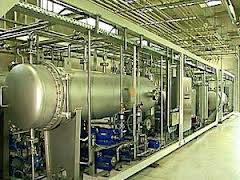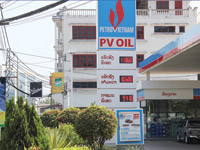Strategy to boost coffee quality, value
Strategy to boost coffee quality, value
The government has approved a strategy to make locally-grown coffee a major national product in Laos for development to an international standard.
Lao Coffee Board Secretary Office Coordinator, Mr Khambon Phasouk said the cabinet had approved the strategy earlier this month, outlining plans to improve the quality of coffee, production development and promotion in domestic and international markets.
The Lao Coffee Sector Development Strategy is also set to improve the business environment for competitiveness and reduction of costs, securing producers' land rights, zoning and land use planning and strengthening institutions and organisational capacities.
The aim of the strategy is to expand coffee production systems, increase sustainability, boost access to international markets and to protect producers and entrepreneurs.
It also looks to enhance the contribution of the Lao coffee sector to meet the national socio-economic development goals of poverty alleviation and economic growth, said Mr Khambon.
To achieve the strategy, he called on the government to improve on current financial policies as producers are still experiencing high interest for loan credit and short terms, while entrepreneurs cannot access financial loans easily.
Mr Khambon said the government should also increase the budget in the sector because coffee development would require a high investment in researching.
Laos currently produces more than 30,000 tonnes of green coffee beans each year, and is exporting about 22,000-25,000 tonnes, Mr Khambon reported.
About 60-70 percent of producers still face a lack of education about production management, marketing and financial access, he explained.
The Bolaven Plateau, which stretches from the district of Pakxong in Champassak province, through Thataeng in Xekong province and into Lau-ngam district in Saravan province, is Laos' most significant production region with coffee plantations covering an estimated 68,000-70,000 ha – representing more than 95 percent of the country's total production.
The quality of Lao coffee in these areas is varied, leading to a negative impact on the image of Lao coffee and price according to the strategy. The production demand of local traders is high and there has been a very strong competition between buyers in recent years. In the short term, this competition may be profitable for producers.
The strategy outlines that to boost the development of the coffee industry, it is important to increase the volume of coffee produced in order to ensure the supply to existing traders.
Production increases will be undertaken mainly by smallholder producers, as granting new land concessions to foreign investors could lead to these parties exporting their own products and may not contribute to supplying local exporters.
Recent growth and investment in the coffee sector have been driven by high coffee prices on the international market. One of the challenges that might be faced by the sector will be to sustain the profitability and competitiveness of the Lao coffee industry in the context of lower prices.
By value coffee is the top agricultural commodity exported by the Lao PDR. It contributes to improving the trade balance and generating income, in particular for smallholder farmers who are growing the majority of the beans.
The strategy also states that the coffee sector brings an important contribution to the wealth of the Lao PDR, and there is still room for further development of the coffee sector in Laos, both in terms of production increase, including production in non-traditional areas, and increasing the added value.
vientiane times















